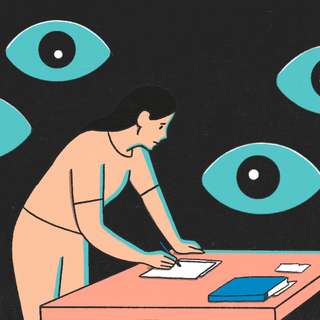In a breakthrough study, scientists were able to facilitate simple vision in a blind participant using brain implants. The technique has been long in the making — since the 1970s, in fact — and researchers were finally able to see positive results.
The study, published this week in The Journal of Clinical Investigation, detailed how scientists could “transfer information” directly to the participant’s visual cortex, allowing her to see simple shapes.
Last year, some members of the present team from the Netherlands Institute for Neuroscience tested the method on two sighted monkeys. The process involved using an implanted electrode to generate a percept of a “dot” of light in visual space. The team used 1024 electrodes to create images by stimulating multiple electrodes.
They found that through the device, the monkeys were able to decipher letters, dots, and lines, and even locate where these were.
“Our implant interfaces directly with the brain, bypassing prior stages of visual processing via the eye or the optic nerve. Hence, in the future, such technology could be used for the restoration of low vision in blind people who have suffered injury or degeneration of the retina, eye, or optic nerve, but whose visual cortex remains intact,” Xing Chen, who was also involved in the 2020 research team, told Science Daily.
Related on The Swaddle:
Brain Implant Offers Hope For Treatment‑Resistant Depression
Now, with the 58-year-old woman, scientists have achieved considerable advances that pave the way for “visual prosthetics,” which could significantly improve the quality of life for people with visual impairment.
The prosthetic apparatus in the present study involved a “microelectrode array” brain implant in the woman’s visual cortex, accompanied by a pair of glasses with a camera that, using special software, could encode visual data to send to the electrodes in the brain. This array would then stimulate surrounding neurons in the brain to produce the “dots” of light (as described in the previous experiment), known as phosphenes, to produce a rudimentary image.
The woman, who is also the co-author of the article due to her extensive involvement in the research, did not report any abnormalities post the implant surgery. She was able to make out shapes, lines, and simple letters.
“These results are very exciting because they demonstrate both safety and efficacy and could help to achieve a long-held dream of many scientists, which is the transfer information from the outside world directly to the visual cortex of blind individuals, thereby restoring a rudimentary form of sight,” Eduardo Fernández, lead author of the study, told Science Daily.
“One goal of this research is to give a blind person more mobility… It could allow them to identify a person, doorways, or cars. It could increase independence and safety. That’s what we’re working toward,” R. A. Normann, a co-author on the study, added.




